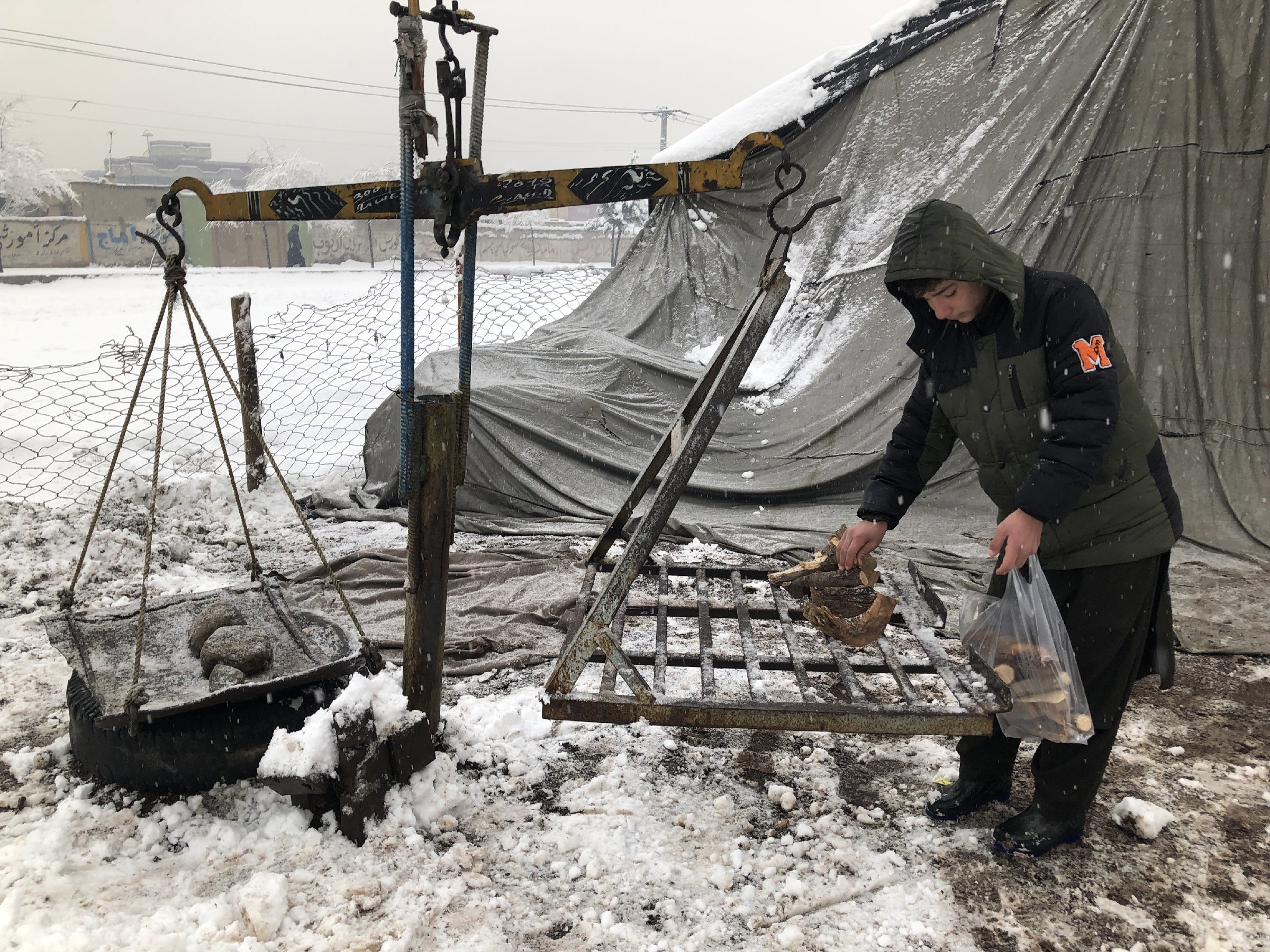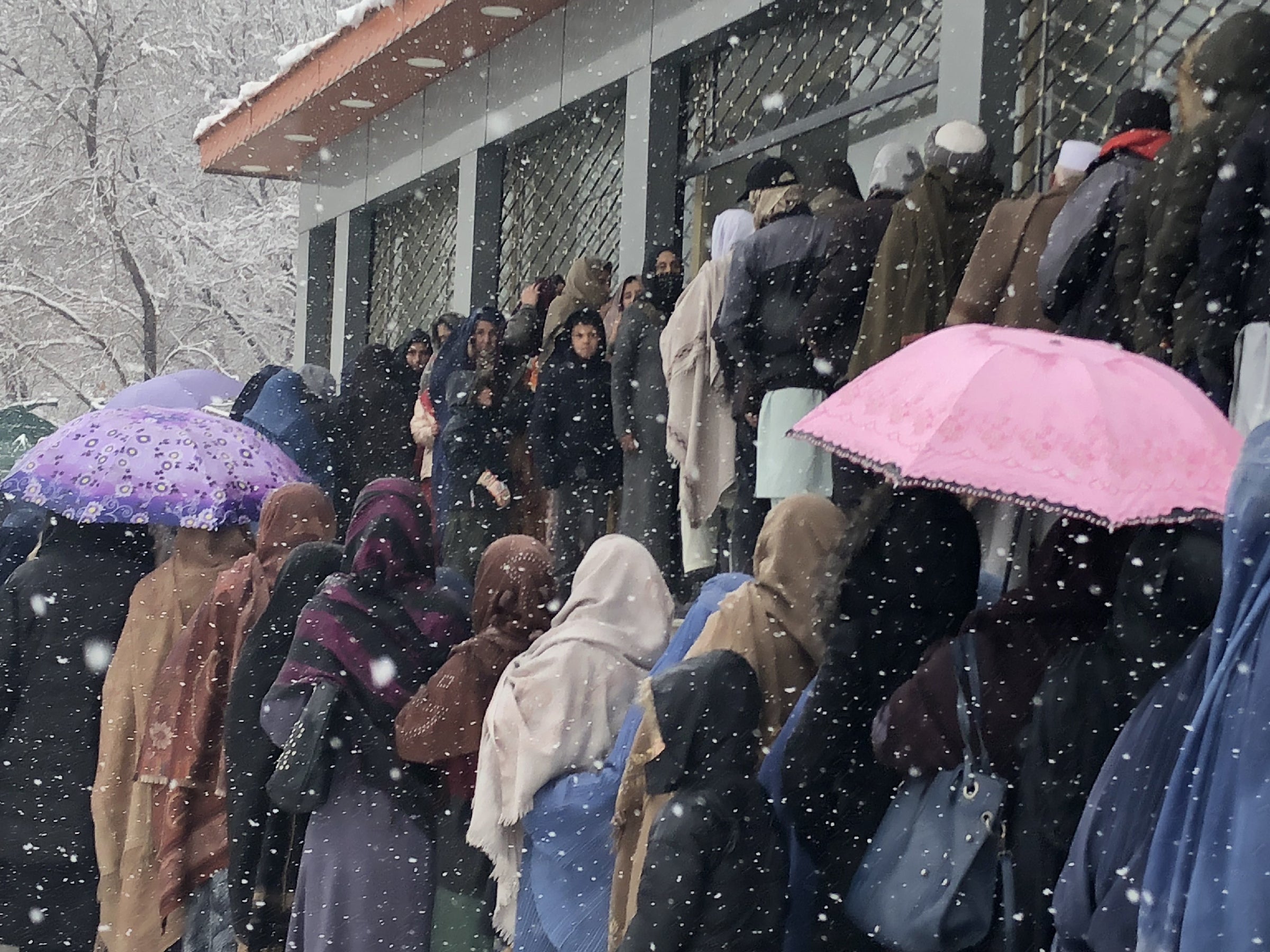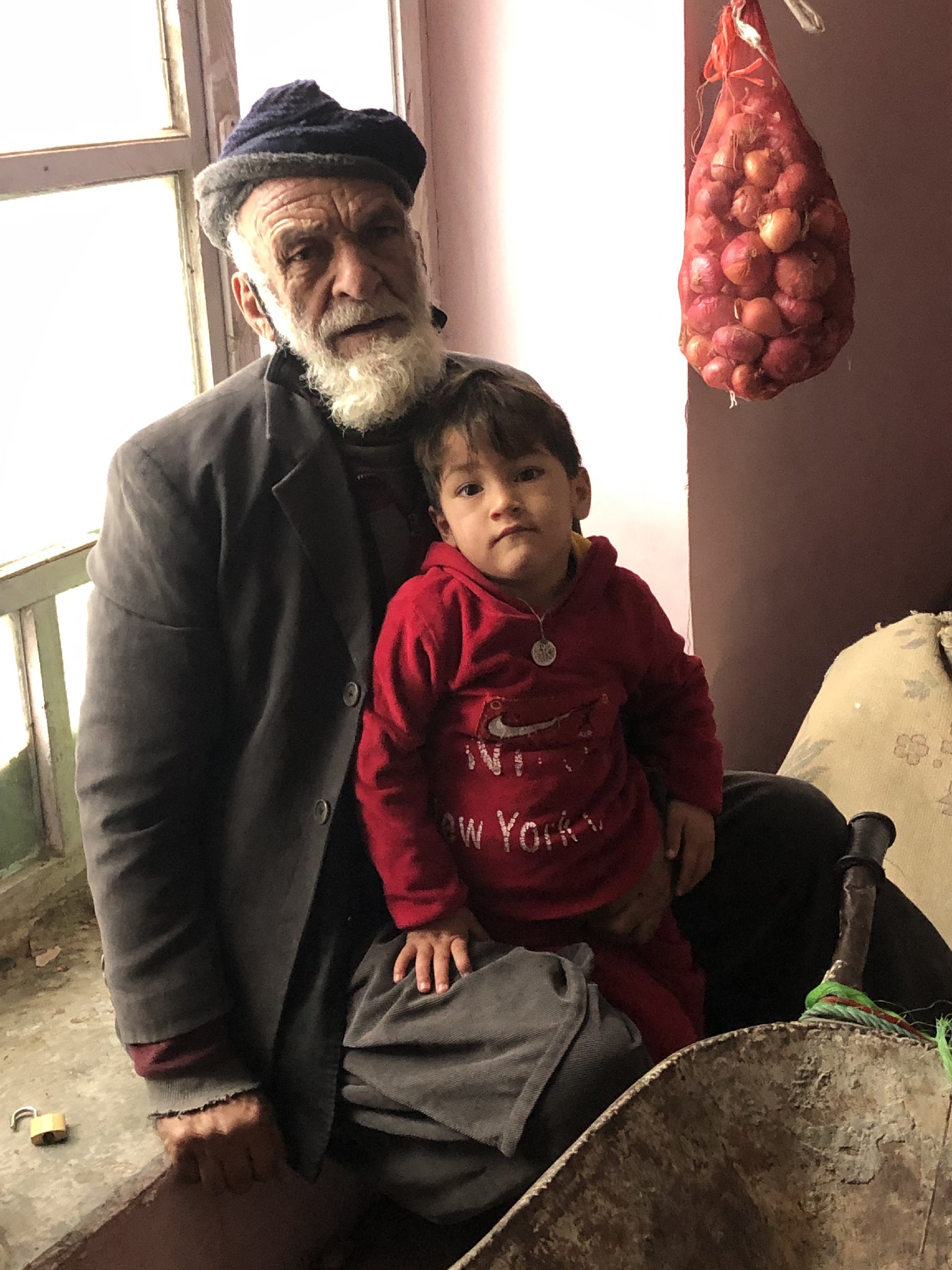In Afghanistan many have to choose between food and warmth
They’ve been told it’s safe to return to their homes in Kabul but as costs rise many are facing tough decisions as the winter sets in, reports Pamela Constable

Your support helps us to tell the story
From reproductive rights to climate change to Big Tech, The Independent is on the ground when the story is developing. Whether it's investigating the financials of Elon Musk's pro-Trump PAC or producing our latest documentary, 'The A Word', which shines a light on the American women fighting for reproductive rights, we know how important it is to parse out the facts from the messaging.
At such a critical moment in US history, we need reporters on the ground. Your donation allows us to keep sending journalists to speak to both sides of the story.
The Independent is trusted by Americans across the entire political spectrum. And unlike many other quality news outlets, we choose not to lock Americans out of our reporting and analysis with paywalls. We believe quality journalism should be available to everyone, paid for by those who can afford it.
Your support makes all the difference.The snow started falling early, prettily dusting trees and fences in the Afghan capital this week but turning unpaved neighbourhood alleys into treacherous sludge. In many poor homes, the heat provided by used coal chips and wood scraps in old metal stoves had died long before daybreak.
Mahmad Ewaz, 28, a former tenant farmer and father of four who fled fighting in Helmand province two years ago, listened to his one-year-old daughter coughing and contemplated a single log resting in the corner. The pantry in the family’s mud-walled home in west Kabul held only a few onions and potatoes, and the stove was dark. It was too cold for his boys to go out and scavenge, so he reached for the log and started shaving off pieces.
“The authorities tell us it is safe to return home now, but we have nothing left there,” Ewaz says with a sigh. Life in the city, though, has become much harder since the Taliban took power again in August. He earns less than a dollar a day, sewing soles onto shoes, and the cost of heating fuel has risen far beyond the family’s means. “At least this log will give us a few more hours tonight,” he says.
The country’s new rulers, cut off from most international aid as well as Afghan government assets held in US accounts, have scant resources to protect millions of vulnerable people against another harsh winter. Aid groups estimate that nearly 23 million Afghans, out of a total population of 39 million, already do not have enough to eat. Many also lack solid shelter and money to heat their homes at night, forcing them to choose between food and fuel, and creating additional potential for a full-fledged humanitarian disaster, aid officials say.
Many Afghans were living a meagre existence before the Taliban's takeover. But others are part of a large, newly impoverished urban working class that mushroomed after the sudden collapse of the vast, foreign-funded war and aid economy.
“Everywhere we go, we find thousands more people who need help,” says Babar Baloch, a spokesperson for the Office of the UN High Commissioner for Refugees in Geneva. “They haven't been driven from their homes but they have lost their jobs, they have no savings, and their life systems are in collapse. They are not on our lists but they come and wait outside the distribution sites, saying, ‘What about us?’”
More than 2,000 men and several hundred women line up outside a warehouse in the impoverished Karte Naw district waiting for handouts of flour, beans, salt and cooking oil
UNHCR is among several international humanitarian agencies that have recently launched emergency winter assistance projects, using indirect funding and limited foreign licensing arrangements to avoid running afoul of international sanctions.
The agency is providing food, blankets and cash for heating fuel to 70,000 people a week in Kabul. Its major focus is on families displaced from rural areas by conflict, a group that swelled from 3.5 million to more than 4 million last year as Taliban fighters swept across the country. With the war at an end, UNHCR officials say, it is safer to deliver aid, but many of the neediest do not meet their strict criteria.
This winter, the World Food Programme has also expanded its operations to provide basic food commodities or cash to the neediest families, such as those headed by widows or jobless breadwinners. Programme officials say they assisted 8 million people in December and expect to reach 12 million this month.
In addition to providing food aid directly, the programme uses cash and “value vouchers” through local banks, mobile networks and money transfer agencies. The vouchers, worth between £45 and £60 depending on the level of need in each area, allow people to purchase their own food or other necessities.
“Nothing goes to the government,” says Shelley Thakral, a spokesperson for the programme in Kabul.

As snow falls steadily from a slate-grey sky, more than 2,000 men and several hundred women line up outside a warehouse in the impoverished Karte Naw district, waiting for handouts of flour, beans, salt and cooking oil provided by the World Food Programme. Shouts of protest erupt periodically when people without the required paperwork are turned away.
As the lines inch forward, approved applicants – war widows, idled construction workers, people caring for ill relatives at home – emerge from the warehouse with signed white tickets in their hands. Then they follow porters with wheelbarrows who trundle heavy flour sacks and other supplies to waiting taxis.
Along a nearby boulevard, women covered by burqas crouch in snowbanks and hold out their hands to cars crawling past. An elderly man clutching an empty sugar sack says his family has applied for food assistance but not heard back. His plan for the day is to knock on doors, ask people if they need their pavements shovelled, and hopes they put a few potatoes or carrots in his sack as payment.
“My life is hard, but it gets much harder in winter,” says Abdul Hadi, 75, who works as a wheelbarrow porter in warmer weather. A few yards down a slushy alley, his daughter and several grandchildren are huddled around a woodstove in one of two rented rooms. Hadi’s battered metal barrow is in the other, piled with flattened cardboard to feed the fire. “We don’t even have enough money for bread,” he says, his face crumpling in defeat. “It’s the same story in every family. Please tell the world to help us.”

Coal and wood sellers, waiting inside fenced yards piled high with stacks of firewood from the eastern Afghan forests and sacks of coal from the northern mountains, draw only a trickle of customers despite the widespread, desperate need for heat. One boy of 12 trudges through the snow to buy 20 sticks of firewood, watching closely as his order is weighed and handing over 50 cents. He says it will last the family one night.
“People can’t afford to buy now, and we can’t afford to sell,” says Shahwali Khan, 50, warming his hands over a small fire at his fuel-supply yard in a poor Kabul district. “Everything is connected. The government has collapsed, people have no salaries, and the economy has gone to zero.” In past winters, he said, “even ordinary people would take home 100 kilos [of wood] at a time. Today I will be happy if I sell 20 kilos by dark.”

Although the cash-strapped Taliban government has almost no means to help the poor, it has been coordinating closely with foreign aid programmes, largely by providing armed escorts for supply trucks and security for crowded distribution sites. All supervisors and workers at the sites are Afghans. Officials who interact with the poor, such as needy people who come to the gates of the Refugees Ministry, also pass on their requests for help.
Mufti Abdal Motalib, the Refugees Ministry spokesperson, says his office has been working with several foreign agencies, including the UN refugee agency, without touching any of the funds they receive. In rural areas where aid distribution was once curtailed by fighting, he says, the new authorities now help deliver it from provincial centres. “The [charities] have relations with the international banks, and we try our best to facilitate their work,” he says. “We want as many Afghans to be helped as possible.”
The sun has reappeared but the weather is bitterly cold, and more snow is expected. Outside a long-abandoned grain elevator, Taliban police stand guard while cargo trucks arrive from warehouses, carrying wheat from Kazakhstan, rice from Tajikistan and cooking oil from Russia. Afghan officials from the German charity World Without Hunger supervise, while rows of wheelbarrows are loaded with food sacks and plastic bags of personal supplies, including toothbrushes, disinfectant, towels and shampoo. In two weeks, they say, they will start distributing blankets and overcoats.
At 9 am, the first of 221 families on the day’s list begin to arrive. One woman named Parasto, speaking from beneath a burqa, says her husband once worked repairing car batteries but is disabled. She says her two sons, 12 and nine, go to school in the mornings, then earn a little money by selling plastic bags for people to burn in their stoves.
Mustafa, the older boy, is blowing on his chapped hands. “It’s cold work,” he says, “and I get cold fast.”
© The Washington Post




Join our commenting forum
Join thought-provoking conversations, follow other Independent readers and see their replies
Comments